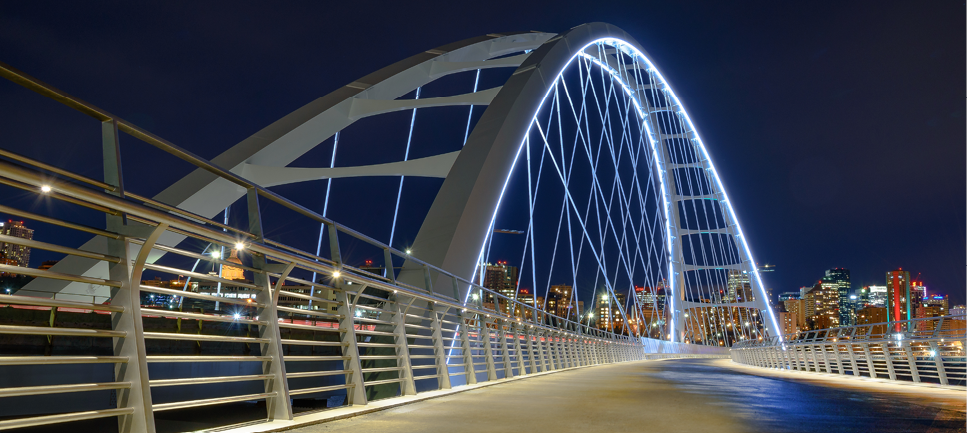There has been a welcome momentum in improving pedestrian access throughout the built environment. From simple rights-of-way connecting disparate pedestrian thoroughfares through cities, to the increasing presence of shared-use paths on highways, we have entered an age where the sole focus is no longer just automobiles; all travelers are considered.
Relatedly, designers are interested in how to minimize the impact of new pedestrian structures. Repurposing dormant rail trestles often provides for functional interconnectedness while reducing the effects of new construction. A “marsupial bridge” provides access by hanging a pedestrian path off an existing vehicle structure. The now decades-old rails-to-trails has changed all landscapes, from urban to rural, and in some cases, offering the spooky experience of biking old train tunnels.
Lighting these features can be challenging. Since many bridges and paths route directly through natural environments, it’s obviously desirable to provide ample light for comfortable travel, but not invade the surrounding space. Using frequently placed low-wattage fixtures mounted near the ground is a means of achieving this. Warm color temperatures, and even the use of amber LED can also provide a more gentle appearance.
Beyond minimizing light pollution, designers must consider the increased service demands for lights. Bridges live a hard life-cyclic vibration; water infiltration, temperature extremes and human risks all take a toll on lighting. There are a number of standards which a designer would consider when specifying lighting on bridges:
- IP66 Ingress Protection per IEC60529: The ability to withstand particulate and water infiltration at high volume and pressure.
- 3G Vibration Rating per ANSI C136.3: Accelerated lifetime-vibration cycling which ensures that over time the fixture will not shake apart.
- Temp Testing per MIL-STD 810G: Exposure and soaking to ambient temperature extremes, from -40°C to +70°C (-40F to 168F).
- IK08 or IK10 Rating per IEC 62262: Striking the face of the fixture using a radiused striking hammer with a specified kinetic energy.
Contact KLIK USA should you wish to discuss these or any aspect of integrating lighting with your architectural metalwork — we’re metal nerds and are happy to chat!
Scroll through to see how KLIK Products are illuminating bridges around the world.
Walterdale Bridge – Edmonton, AB, Canada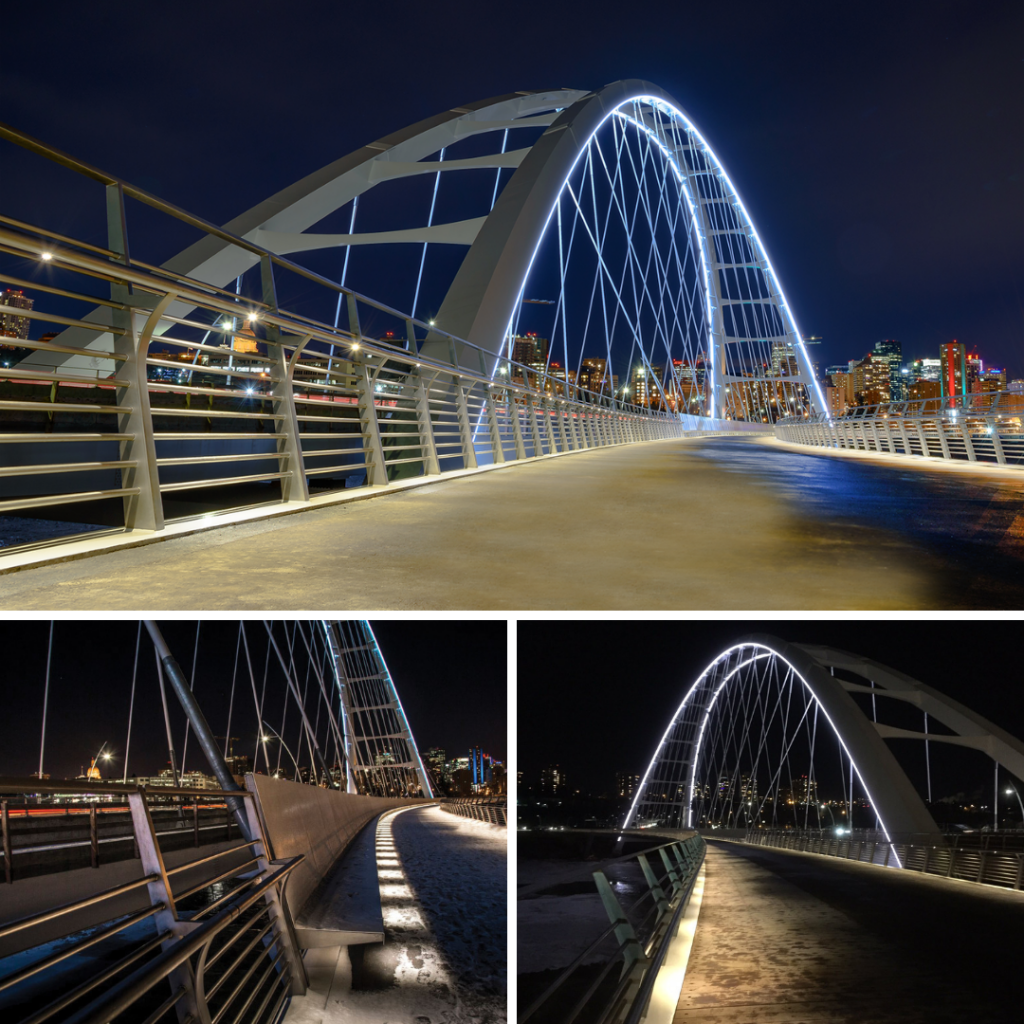
Products: Handrail – KLIK LEDpod™ 50, Custom under-bench lighting – KLIK LEDpod™ XL28 Flat
Strzelecki Bridge/Newcastle Memorial Walk – Newcastle, NSW, Australia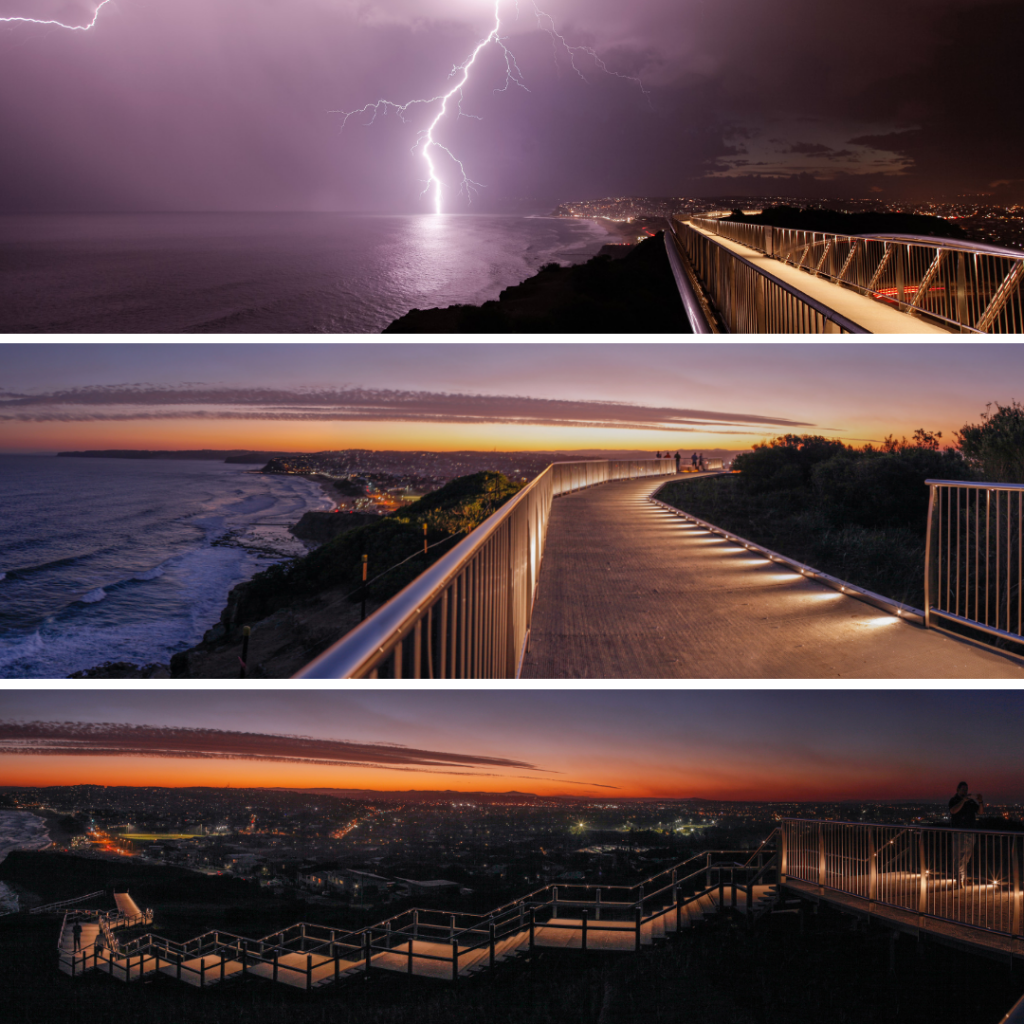
Products: Handrail – KLIK LEDpod™ 40, Path-grazing lighting – KLIK LEDpod™ XL32 Flat
Lewis & Clark (East End) Bridge – Louisville, KY, USA 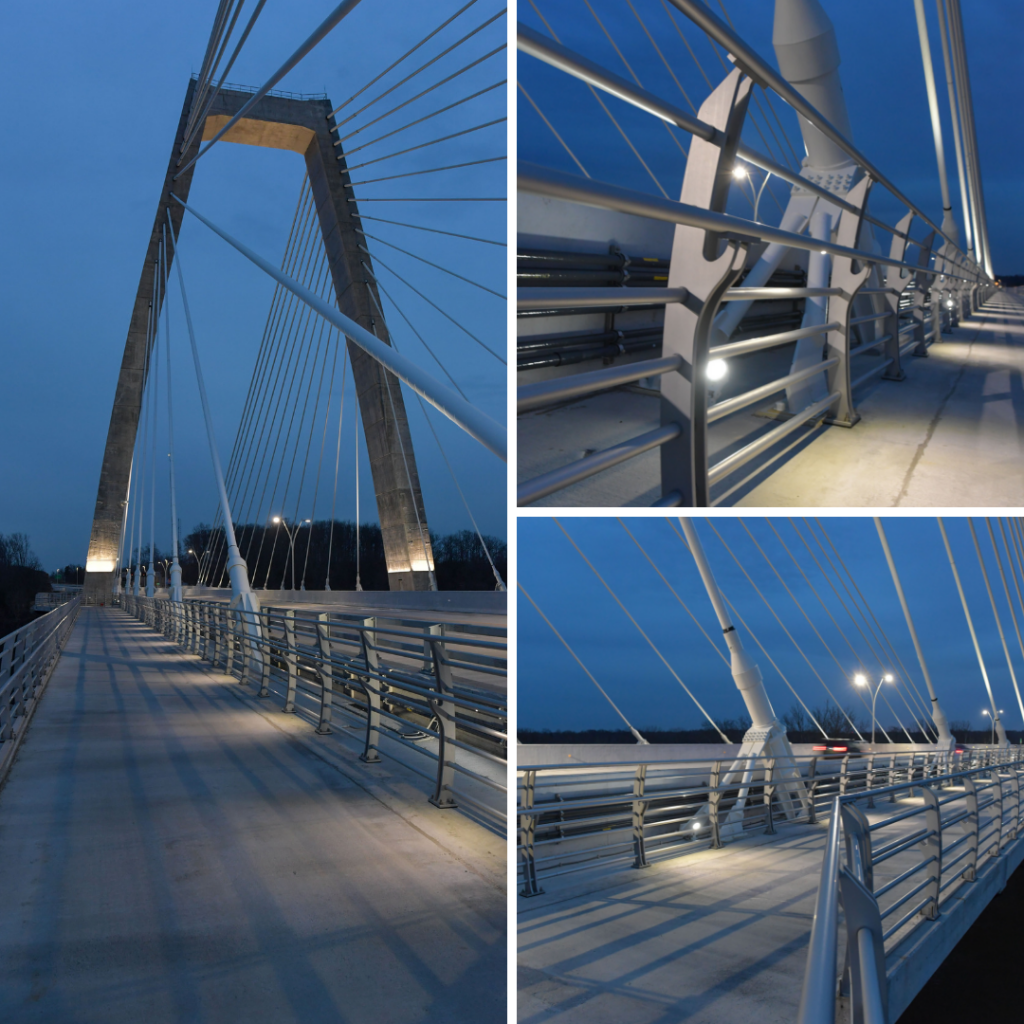
Product: KLIK LEDpod™ 50
Read more about this project in our blog, Lighting a bridge over the Ohio River.
Confluence Park Bridge – Issaquah, WA, USA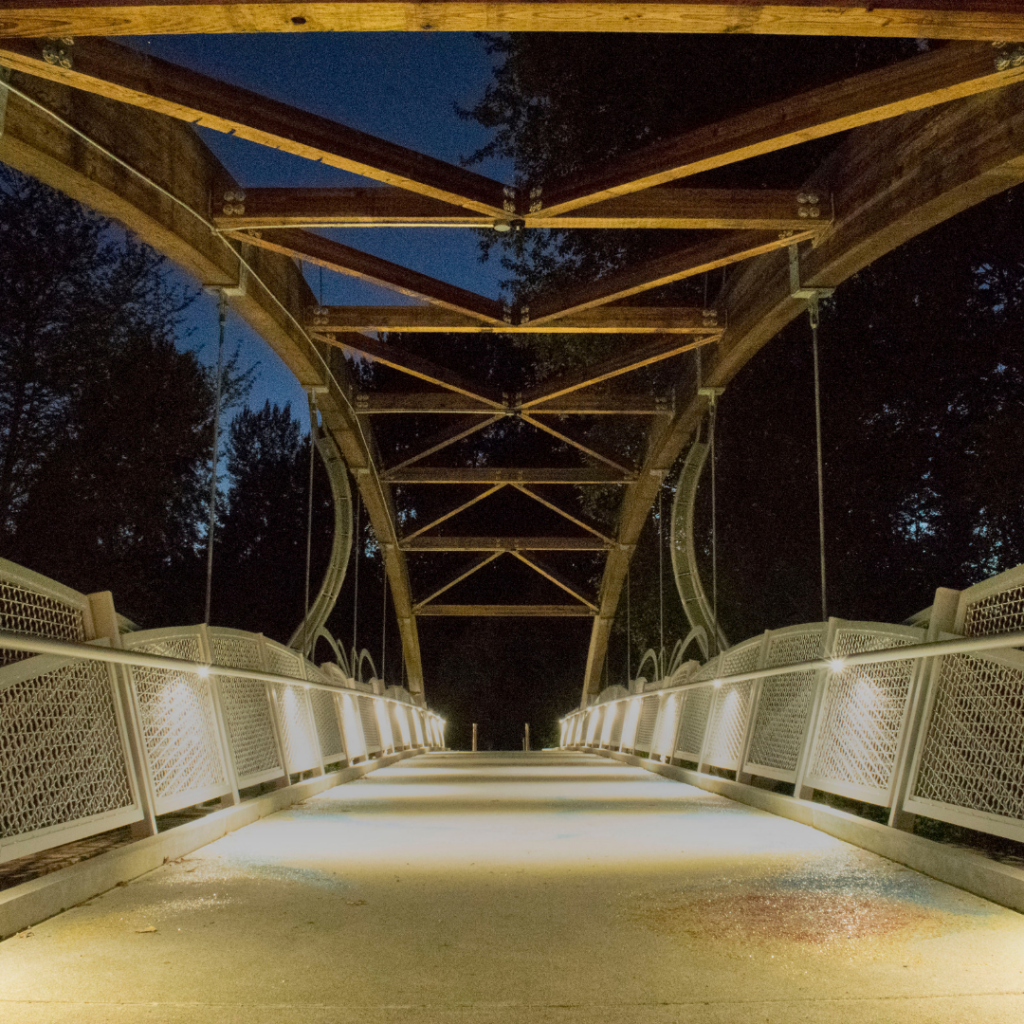
Product: KLIK LEDpod™ 50
Mentioned in our blog about Integrating Lighting with Wildlife for its use of daylight timers and motion sensors in a wildlife-sensitive site.

